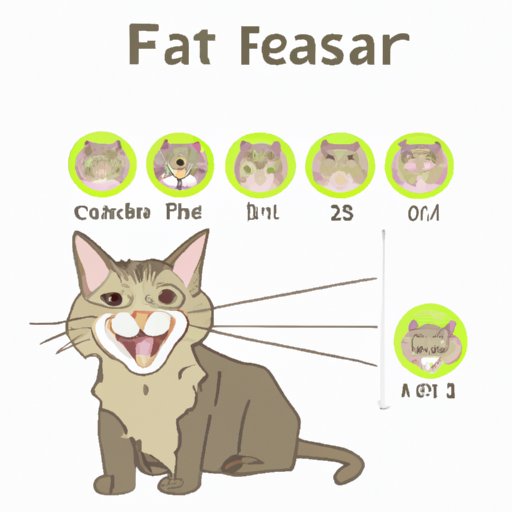
Introduction
Do you know how old your furry feline friend is? Determining a cat’s age can be tricky—after all, cats can be masters of disguise. Some may even argue that age is just a number when it comes to our feline companions. However, understanding your cat’s age is crucial for their health and wellness. In this article, we’ll debunk some common myths about determining a cat’s age, provide expert tips on accurately assessing your feline friend’s age, and discuss the physical and behavioral changes that occur as cats age.
Age is More Than Just a Number for Cats
Just like humans, cats undergo physical and behavioral changes as they grow older. Here are some of the most common changes you might notice:
Physical Changes:
Physical changes are usually the most noticeable. As cats get older, they may experience:
- Weight changes
- Loss of muscle tone
- Grey hairs on the face and body
- Nail thickening and elongation
- Deterioration of hearing and vision
Behavioral Changes:
Behavioral changes can be a bit more subtle. Some signs that your cat might be aging include:
- Lack of energy and decreased activity level
- Increased irritability or aggression
- Poor grooming habits
- Changes in sleeping patterns
- Toileting issues
It is important to be able to differentiate between kittens, young adults, and senior cats to understand what changes to expect and how to care for them appropriately.
Methods For Estimating A Cat’s Age
If you’re like most cat owners, you probably don’t know your cat’s exact age. Fortunately, there are several methods to estimate the age of your cat:
Examining Your Cat’s Teeth and Gums
Just like humans, cats’ teeth undergo changes with age. Kittens have 26 baby teeth, which are gradually replaced by 30 adult teeth. By the time a cat is one year old, all of their adult teeth should have grown in. As cats age, their teeth may become discolored, and dental disease is more common. By examining your cat’s teeth, you can estimate their age range.
Assessing Your Cat’s Eyes
As cats age, their eyes may show signs of aging too. Young cats tend to have bright, clear eyes. If your cat’s eyes appear cloudy or discolored, this could be a sign of aging.
Examining Your Cat’s Coat
A cat’s fur can also provide clues about their age. Kittens have soft, fluffy fur, whereas older cats tend to have coarser, thinner fur. Similarly, if your cat’s coat has balding or matting, this may be an indication of aging.
Checking Your Cat’s Body Condition Score
Body condition score is a widely used tool in veterinary medicine to evaluate an animal’s body fat. As cats age, they may gain or lose weight, which can affect their overall condition score. Evaluating your cat’s body condition score can be a useful tool in estimating their age.
Assessing Your Cat’s Activity Level and Overall Health
If your cat is highly active and playful, they are likely still in their younger years. As cats age, they often become less active, sleeping more and showing less interest in play. Keeping an eye on your cat’s overall health and well-being can also provide insight into their age range.
Cat Lifespan
Cat lifespan varies based on breed and other factors. On average, cats can live between 12 and 15 years. However, some breeds, such as Siamese and Persian cats, can live up to 20 years or more. Gender can also play a role in a cat’s lifespan.
Factors That Can Influence How Long a Cat Will Live
There are many factors that can affect a cat’s lifespan, including:
- Nutrition and diet
- Genetics
- Overall health and wellness
- Access to veterinary care
How to Quickly Assess Your Cat’s Age
Here are some quick tips to help you estimate your cat’s age:
- Kittens: less than 1 year old
- Young adults: 1 to 6 years old
- Mature adults: 7 to 10 years old
- Senior cats: 11 years and older
Additionally, it’s worth considering your cat’s behavior. Younger cats tend to be more active and playful, while older cats prefer lounging around and sleeping. Paying attention to physical and behavioral signs can help you determine your cat’s age range.
Conclusion
Knowing your cat’s age is important for their health and wellness. By examining your cat’s teeth, eyes, coat, body condition score, and overall health, you can estimate their age range. Understanding the physical and behavioral changes that occur as cats age can also help you care for them appropriately.




